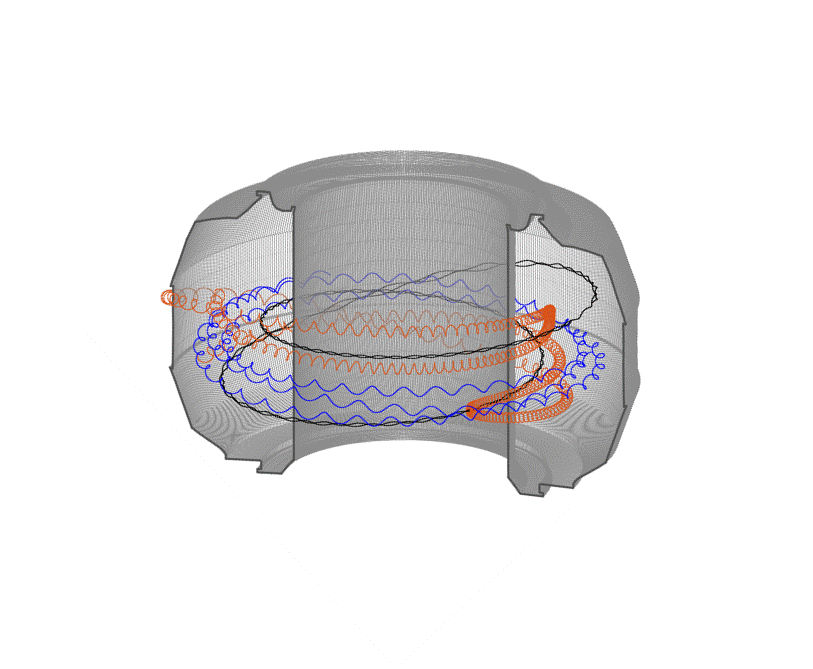
Filter News
Area of Research
- Advanced Manufacturing (3)
- Biological Systems (1)
- Biology and Environment (24)
- Clean Energy (45)
- Climate and Environmental Systems (1)
- Computer Science (5)
- Electricity and Smart Grid (1)
- Fusion and Fission (12)
- Fusion Energy (8)
- Isotope Development and Production (1)
- Isotopes (2)
- Materials (26)
- Materials for Computing (3)
- National Security (4)
- Neutron Science (11)
- Nuclear Science and Technology (7)
- Quantum information Science (4)
- Sensors and Controls (1)
- Supercomputing (22)
News Type
News Topics
- (-) Bioenergy (39)
- (-) Fusion (23)
- (-) Grid (36)
- (-) Mercury (5)
- (-) Quantum Science (36)
- (-) Space Exploration (13)
- 3-D Printing/Advanced Manufacturing (74)
- Advanced Reactors (23)
- Artificial Intelligence (44)
- Big Data (24)
- Biology (39)
- Biomedical (28)
- Biotechnology (10)
- Buildings (32)
- Chemical Sciences (39)
- Clean Water (15)
- Climate Change (45)
- Composites (19)
- Computer Science (98)
- Coronavirus (28)
- Critical Materials (23)
- Cybersecurity (20)
- Decarbonization (28)
- Education (3)
- Element Discovery (1)
- Energy Storage (73)
- Environment (79)
- Exascale Computing (10)
- Fossil Energy (2)
- Frontier (16)
- High-Performance Computing (39)
- Hydropower (6)
- Irradiation (2)
- Isotopes (23)
- ITER (5)
- Machine Learning (24)
- Materials (92)
- Materials Science (84)
- Mathematics (2)
- Microelectronics (1)
- Microscopy (27)
- Molten Salt (7)
- Nanotechnology (38)
- National Security (21)
- Net Zero (5)
- Neutron Science (76)
- Nuclear Energy (45)
- Partnerships (30)
- Physics (28)
- Polymers (21)
- Quantum Computing (13)
- Renewable Energy (1)
- Security (12)
- Simulation (15)
- Statistics (2)
- Summit (27)
- Sustainable Energy (75)
- Transformational Challenge Reactor (4)
- Transportation (60)
Media Contacts

Researchers used neutron scattering at Oak Ridge National Laboratory’s Spallation Neutron Source to investigate bizarre magnetic behavior, believed to be a possible quantum spin liquid rarely found in a three-dimensional material. QSLs are exotic states of matter where magnetism continues to fluctuate at low temperatures instead of “freezing” into aligned north and south poles as with traditional magnets.

Scientists at the Department of Energy’s Oak Ridge National Laboratory have created a recipe for a renewable 3D printing feedstock that could spur a profitable new use for an intractable biorefinery byproduct: lignin.

Oak Ridge National Laboratory scientists have devised a method to control the heating and cooling systems of a large network of buildings for power grid stability—all while ensuring the comfort of occupants.
Scientists studying a valuable, but vulnerable, species of poplar have identified the genetic mechanism responsible for the species’ inability to resist a pervasive and deadly disease. Their finding, published in the Proceedings of the National Academy of Sciences, could lead to more successful hybrid poplar varieties for increased biofuels and forestry production and protect native trees against infection.

Biologists from Oak Ridge National Laboratory and the Smithsonian Environmental Research Center have confirmed that microorganisms called methanogens can transform mercury into the neurotoxin methylmercury with varying efficiency across species.

Qrypt, Inc., has exclusively licensed a novel cyber security technology from the Department of Energy’s Oak Ridge National Laboratory, promising a stronger defense against cyberattacks including those posed by quantum computing.

Fusion scientists from Oak Ridge National Laboratory are studying the behavior of high-energy electrons when the plasma that generates nuclear fusion energy suddenly cools during a magnetic disruption. Fusion energy is created when hydrogen isotopes are heated to millions of degrees...

Scientists at the Department of Energy’s Oak Ridge National Laboratory are the first to successfully simulate an atomic nucleus using a quantum computer. The results, published in Physical Review Letters, demonstrate the ability of quantum systems to compute nuclear ph...

A shield assembly that protects an instrument measuring ion and electron fluxes for a NASA mission to touch the Sun was tested in extreme experimental environments at Oak Ridge National Laboratory—and passed with flying colors. Components aboard Parker Solar Probe, which will endure th...

The Department of Energy has announced funding for new research centers to accelerate the development of specialty plants and processes for a new generation of biofuels and bioproducts. The Center for Bioenergy Innovation (CBI), led by Oak Ridge National Laboratory...


